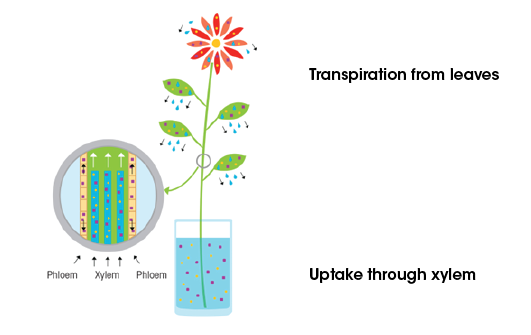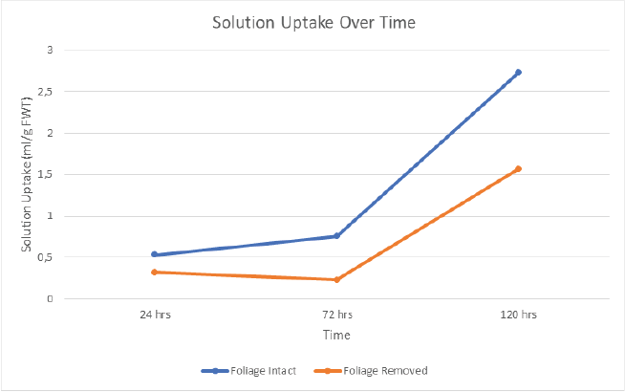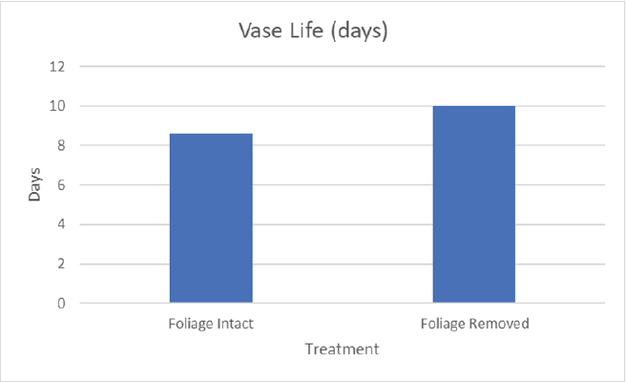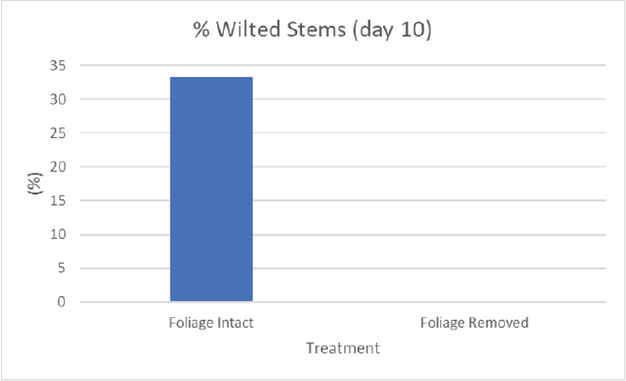The term ‘water balance’ as it relates to cut flowers refers to the amount of water that evaporates from the leaves and flowers through the process of transpiration vs. the amount of water taken up by the stem. Transpiration occurs through microscopic pores called stomata – these are normally found on the undersides of the leaves and can open and close in response to environmental signals like light levels. Water and nutrients are taken up through the stems by specialized cells called the xylem – these are the ‘plumbing’ system of the stem. Think of the xylem cells as a series of microscopic straws stuck one inside the other. Transpiration and uptake are associated processes – as water is lost from the leaves, it is “pulled” up the stem. If the transpiration rate exceeds the uptake rate through the stem – the flower wilts.

Cut hydrangea is one type of flower in which water balance is critical. Its large leaves contain a lot of surface area for transpiration. Often, a vase with multiple stems of hydrangeas will have a flower that inadvertently wilts while the rest of the flowers look hydrated and healthy. We wanted to investigate the role of hydrangea foliage in transpiration and determine if foliage is necessary for water uptake.
Methods:
Cut Hydrangeas were received from a grower in Colombia. One set of stems was processed, leaving one set of fully expanded leaves, while another set of stems had all the leaves removed. All stems were re-cut, weighed, and placed in vases of FloraLife® Clear 300 Flower Food. Vase solution uptake (ml/ gram FWT) was determined for each treatment after 24, 72, and 120 hours along with vase life and the percentage of flowers wilted after ten days.
Results:



Conclusions:
- Hydrangea foliage was not required for solution uptake, suggesting that transpiration is also occurring through the bracts (flowers).
- Solution uptake was reduced when foliage was removed but remained high enough to keep flowers hydrated.
- Vase life increased by approximately 1.5 days when foliage was removed.
- 33% of flowers showed signs of wilting by day 10 when foliage was left intact, while 0% of flowers displayed wilting when foliage was removed.
- It is recognized that hydrangea foliage contributes to the flower’s aesthetics; however, based on these data, it is recommended that florists should not leave more foliage than necessary for aesthetic appeal.
